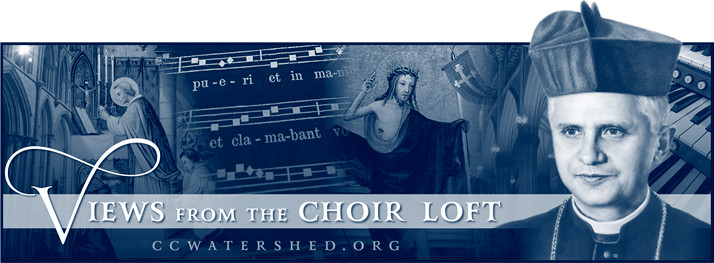 HE IMPRESSIVE collection of vernacular plainsong propers known as The O’Fallon Propers was published in the 1960s by SAINT MARY’S INSTITUTE in O’Fallon, Missouri. But what exactly was “SAINT MARY’S INSTITUTE”—and who was in charge of it? From what I can tell, the motherhouse for the Sisters of the Most Precious Blood was located in O’Fallon (just west of St. Louis, Missouri). The SAINT MARY’S INSTITUTE seems to have been intimately connected with Dom Ermin Vitry, OSB, who was born on 22 December 1884 in Lobbes, a village in Belgium. Vitry entered religious life at the magnificent Maredsous Abbey in 1902, one year before the sacred music legislation of Pope Saint Pius X was issued in 1903.1
HE IMPRESSIVE collection of vernacular plainsong propers known as The O’Fallon Propers was published in the 1960s by SAINT MARY’S INSTITUTE in O’Fallon, Missouri. But what exactly was “SAINT MARY’S INSTITUTE”—and who was in charge of it? From what I can tell, the motherhouse for the Sisters of the Most Precious Blood was located in O’Fallon (just west of St. Louis, Missouri). The SAINT MARY’S INSTITUTE seems to have been intimately connected with Dom Ermin Vitry, OSB, who was born on 22 December 1884 in Lobbes, a village in Belgium. Vitry entered religious life at the magnificent Maredsous Abbey in 1902, one year before the sacred music legislation of Pope Saint Pius X was issued in 1903.1
Dom Ermin Vitry • Dom Ermin Vitry was ordained a Benedictine priest in 1907. At the LEMMENSINSTITUUT, he studied organ with the legendary Edgar Tinel (d. 1912). The Benedictines sent him from Belgium to the United States where he served as director of music for the SAINT MARY’S INSTITUTE—but sources disagree vis-à-vis the precise years this took place. For the record, Monsignor Martin B. Hellriegel served as chaplain for the O’Fallon sisters from 1918-1940. Vitry and Hellriegel knew each other.
The Institute • One source says: “As choir director, Dom Ermin taught the Sisters an appreciation of sacred liturgical music through Gregorian Chant.” In a (very brief) biography of Dom Vitry published in 1988, Monsignor Francis P. Schmitt insinuates that Vitry was the driving force behind what would become the O’Fallon Propers. Monsignor Schmitt wrote: “I am no enthusiast for English chant, never have been. But I recognize a legitimate place for it…” He then went on to say:
“The late Dom Ermin Vitry and the recently deceased Charles Dreisoerner (either of whom forgot more about Gregorian than most pundits I encounter these days will ever know) both felt that, in some measure, the preservation of Gregorian as the song of the faithful, the saving of it from a second and final death, depended upon a viable vernacular use.”
Mysterious • Some people believe that Monsignor Hellriegel was the actual composer of The O’Fallon Propers. One thing is certain: its 483 pages must have been in production for many years before its publication in 1964. I would welcome any information about what remains of SAINT MARY’S INSTITUTE or the Sisters of the Most Precious Blood in O’Fallon.
Here’s a photograph of Dom Ermin Vitry taken circa 1935:

1 This motu proprio was known as “Inter Pastoralis Officii Sollicitudines.” Some people also refer to it by the Italian name: “Tra Le Sollecitudini.”
![]()


